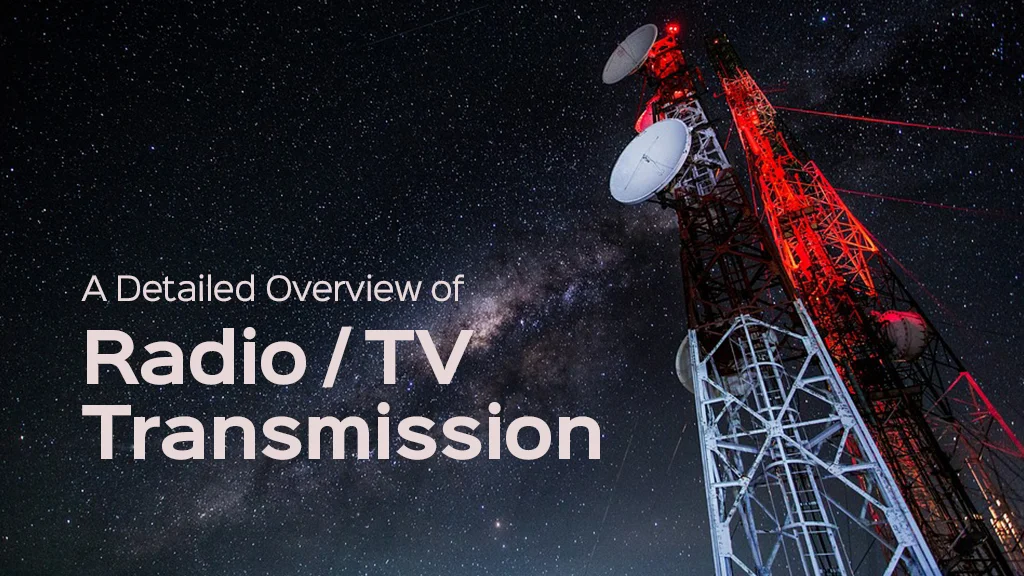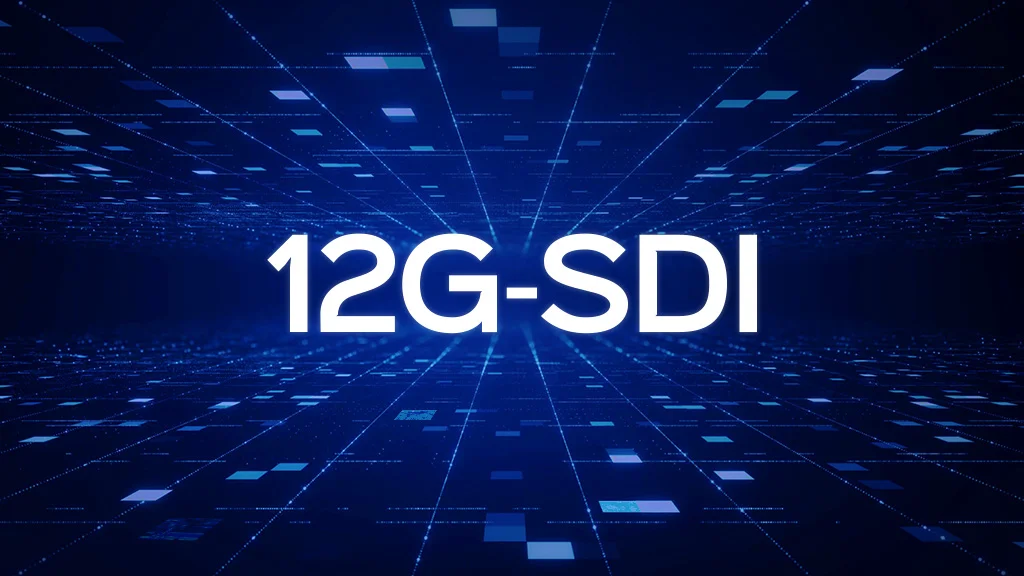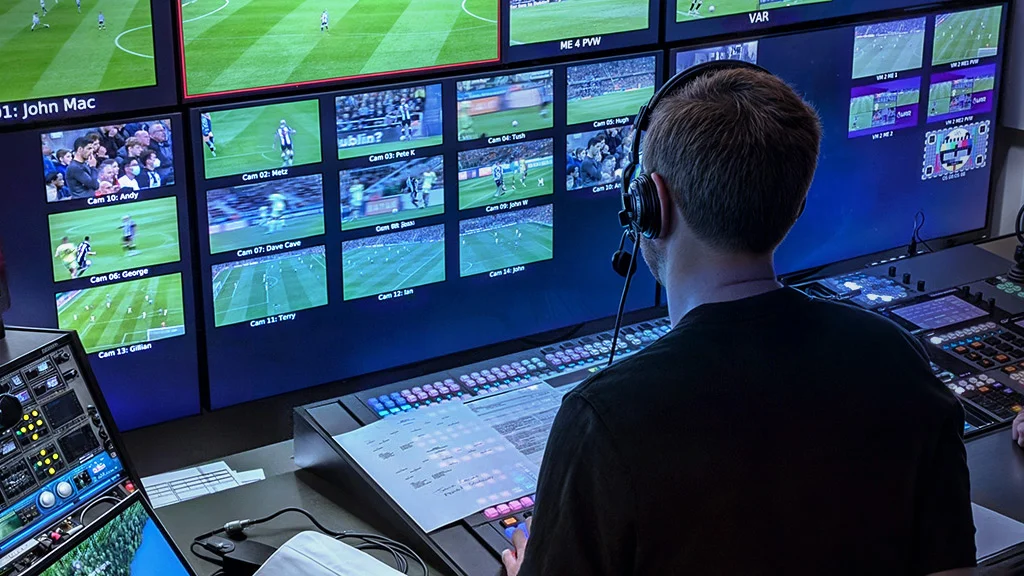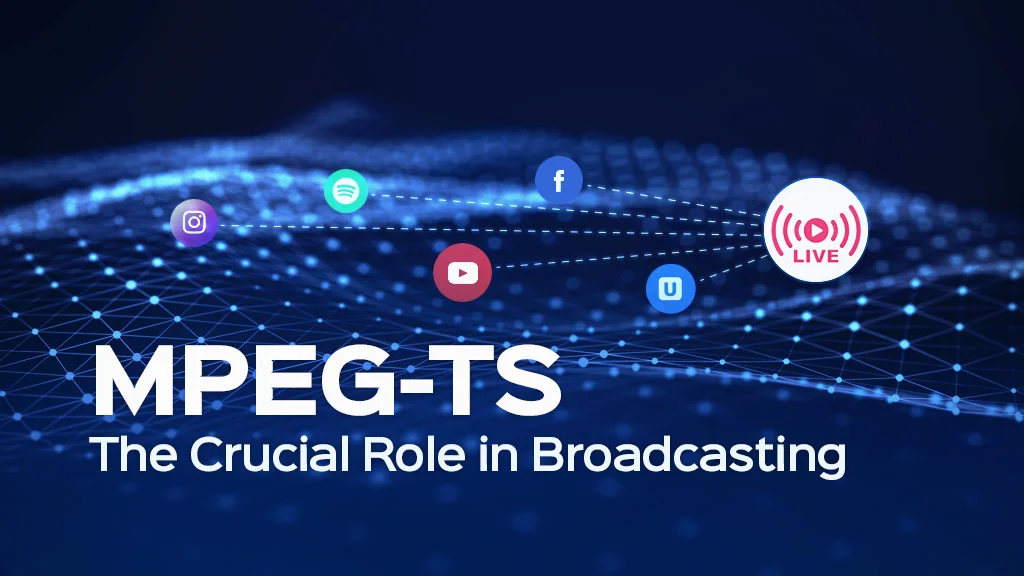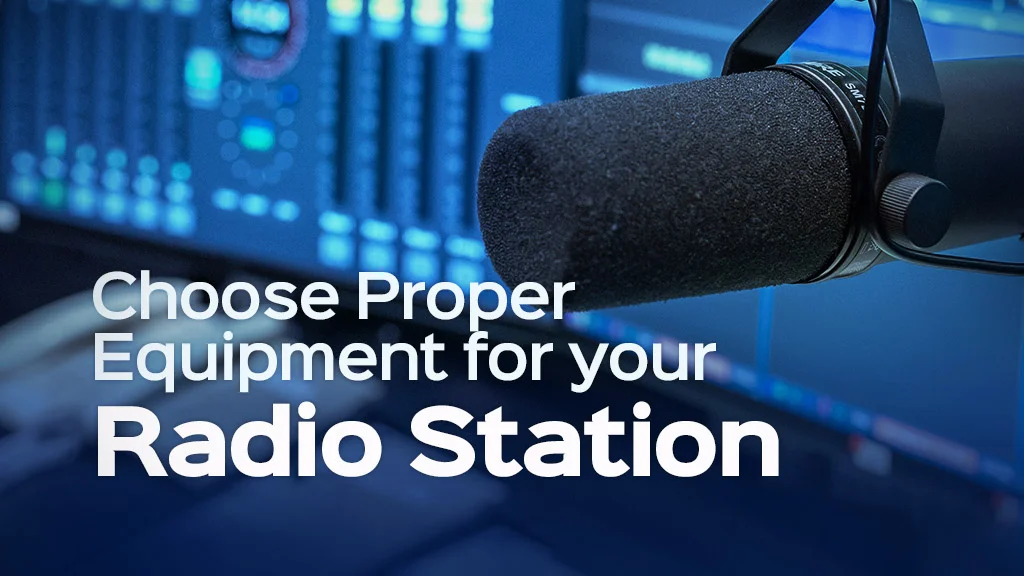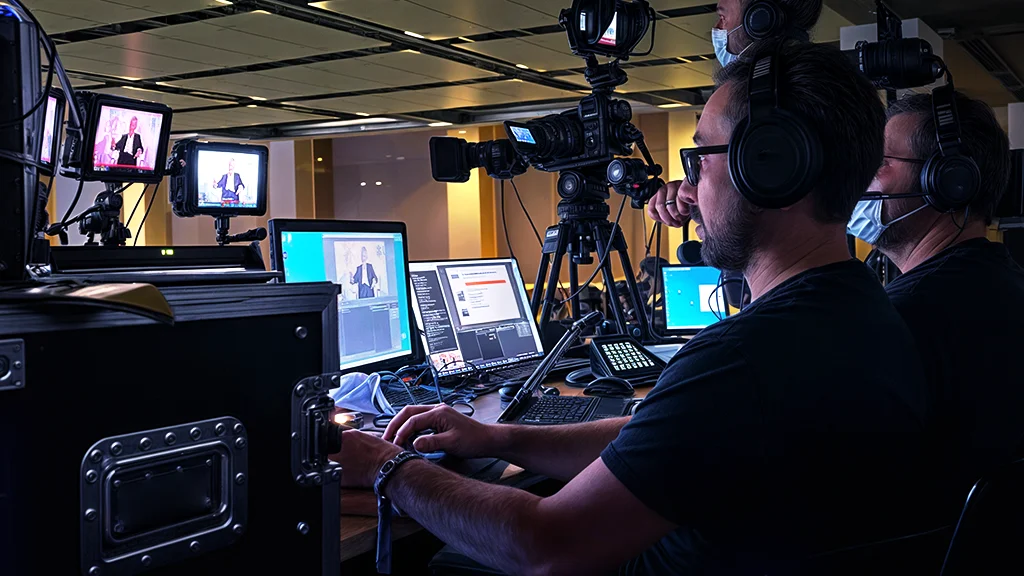
- Academy
Seamless Switching in Live Broadcast; Why It Matters?
Seamless switching is an important process in live broadcasting that guarantees the uninterrupted delivery of content. As audiences demand high-quality, flawless programming, the broadcasting industry is increasingly adopting seamless switching to facilitate smooth transitions between video sources.
This technology not only enhances viewer engagement but also allows broadcasters to uphold professional standards in their productions. By ensuring that transitions between different video feeds occur without noticeable interruptions or delays, seamless switching is crucial for maintaining the flow of live broadcasts.
This blog will explore the nuances of broadcast seamless switching, the underlying technologies involved, and its diverse applications in various broadcasting scenarios.
What is the word “Seamless” in Broadcasting?
In broadcasting, the word of “seamless” refers to transitions or operations that are smooth and imperceptible to the viewer or listener. Here are a few examples:
Seamless switching: This involves switching between different video sources (e.g., cameras, playouts) without any noticeable glitches, black frames, or disruptions.
Seamless looping: This is when a video or audio clip repeats continuously without any abrupt cuts or pauses, creating a smooth, endless playback.
Seamless integration: This refers to incorporating different elements (e.g., graphics, data feeds) into a broadcast in a way that appears natural and integrated, without looking forced or out of place.
Why Seamless Switching is Critical in Live Broadcasting
Seamless switching is a very important procedure offered by many live broadcast solutions ; and the key reasons are:
Maintaining Viewer Engagement
Abrupt cuts or glitches can distract viewers and pull them out of the broadcast. Seamless switching helps keep viewers focused on the content.
Professionalism and Viewer Experience
Smooth transitions maintain a professional look and feel, preventing jarring disruptions that can distract or annoy viewers. A seamless broadcast enhances the viewing experience, making it more enjoyable and engaging.
Avoiding Technical Difficulties Perception
Smooth transitions give the impression of a well-produced and technically perfect broadcast. Glitches can make the broadcast appear amateurish or poorly managed.
Handling Unexpected issues Gracefully
Unexpected concerns can occur in live broadcasting. Seamless switching allows directors to quickly and smoothly switch to backup feeds or alternate camera angles to cover these situations without disrupting the broadcast.
storytelling and Pacing
Seamless transitions contribute to the narrative flow and pacing of the broadcast. They allow for smooth changes in perspective or focus, enhancing the storytelling process.
Read also :
Key Technologies Behind Seamless Switching
Seamless switching in broadcasting hinges on several key technologies working in concert. These technologies work together to ensure smooth, glitch-free transitions between video sources in a live broadcast.
Synchronization: Genlock and timecode are critical for aligning multiple video/audio sources. Without precise sync, switches are jarring.
Frame Synchronization: Essential for handling asynchronous feeds; aligns incoming signals despite timing differences.
Advanced Switchers: Utilize sophisticated algorithms for clean cuts, dissolves, or wipes without glitches. Key features include:
- Vertical Interval Switching: Switching during the vertical blanking interval (the part of the signal not visible on screen) to hide the transition.
- Cut-and-Fade Transitions: Quick, clean fades between sources.
Redundant Systems: Backup systems (e.g., redundant switchers, power supplies) are essential to ensure continuous operation in case of a failure.

Applications of Seamless Switching in Live Broadcasting
Seamless switching can be used in a wide range of live broadcasting applications:
News: Switching between reporters in the field, studio anchors, and video packages needs to be seamless to maintain the flow of information.
Sport: Rapidly changing camera angles, instant replays, and graphics overlays all require seamless switching to keep up with the action.
Entertainment Programs (Talk Shows, Game Shows): Switching between hosts, guests, audience shots, and pre-produced segments requires smooth transitions to keep the show engaging.
Concerts and Live Music Events: Switching between multiple cameras capturing different angles of the performers requires seamless switching to create a dynamic and immersive experience for viewers.
Political Events (Debates, Rallies): Seamless switching allows broadcasters to capture the event’s energy and quickly react to key moments.
E-sports Tournaments: Switching between player perspectives, commentators, and overall game views requires precise and seamless transitions.
Worship Services: Switching between different camera angles of the clergy, choir, and congregation needs to be seamless to maintain the reverence and flow of the service.
Educational Broadcasts/Webinars: Switching between presenters, slides, and demonstrations requires seamless transitions to keep viewers engaged and facilitate learning.
Technologies used in seamless switching
Various technologies support seamless switching in live broadcasting, ensuring smooth, professional transitions between video and audio sources. These include:
Video Switchers: Devices like production switchers that allow for rapid source changes. These switchers range from hardware-based solutions offering low latency to software-based options providing increased flexibility.
Signal Routers: these modules manage and route different video and audio feeds within a broadcast facility, ensuring they are delivered without interruption. They handle various signal formats (SDI, IP) and provide routing control and redundancy.
Frame Synchronizers: Critical for ensuring that incoming video signals are aligned in timing and frame rate. This prevents glitches and allows for clean transitions between asynchronous sources.
Multiviewers: Provide real-time monitoring of multiple sources on a single display, enabling the operator to make informed switching decisions. Multiviewers offer customizable layouts, source identification, and audio monitoring.
Graphics Generators (Real-Time Graphics Engines): Integrated systems for adding real-time graphics, lower thirds, scoreboards, and overlays during broadcasts. They often integrate with data sources for dynamic updates.
Networked Video (IP-Based Solutions): Technologies that enable video and audio transmission over IP networks, offering flexibility and scalability.
Cloud-based Solutions: Platforms that enable remote switching, production, and distribution for added flexibility and resource efficiency. Cloud solutions are increasingly used for live event production and remote broadcasting.
Automatic Transfer Switches (ATS) / Uninterruptible Power Supplies (UPS): Although often overlooked in discussions of seamless switching, these are critical for uninterrupted broadcasts. They ensure a stable power supply, preventing disruptions due to power outages.
In summary, seamless switching technology is imperative in live broadcasting, enabling broadcasters to meet the high expectations of today’s audiences through smooth, professional transitions that enhance viewer engagement and satisfaction. These technologies create a flawless viewing experience, minimizing disruptions and maximizing audience retention.
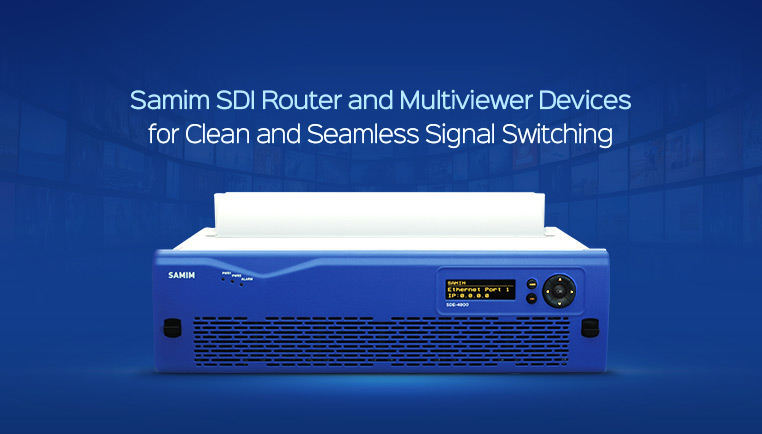
Samim Group’s products for Seamless Switching
As a professional manufacturer of professional broadcast equipment, Samim Group offers products that play a significant role in implementing seamless switching. This section introduces two key products from the company:
- SAMIM SDE-4800
SDE-4800 Video Router with Multiviewer capability is an SDI video processor for managing and routing multiple video and audio feeds in a live broadcast environment. While it offers a wide range of functionalities, its “Clean Switch Modules (CLN-OUT)” are particularly relevant to seamless switching. These modules generate four clean & quiet switched outputs from any selected input, ensuring artifact-free transitions even when dealing with asynchronous sources.
- SAMIM TSC-1400: Redundancy Switch for Uninterrupted Signal Delivery
TS changeover switch (TSC-1400) guarantees continuous delivery of MPEG transport streams, even in signal degradation or failure. This is achieved through its automatic switching capabilities between primary and backup sources. Signal loss during a live broadcast is a nightmare. Samim Group’s TSC-1400 mitigates this risk by constantly monitoring the health of the primary signal. If errors are detected, it seamlessly switches to the backup source, preventing any interruption to the broadcast. This redundancy is essential for maintaining viewer trust and ensuring that critical information or entertainment is delivered reliably.
Frame-Aligned Seamless Operation: TSC-1400 boasts frame-aligned seamless operation, meaning the switchover between sources occurs precisely at a frame boundary. This eliminates the possibility of displaying partial or corrupted frames during the transition, further enhancing the viewing experience. Seamless switching is not just a desirable feature in live broadcasting – it is a necessity. Samim products for Seamless Switching empower broadcasters to deliver high-quality, uninterrupted content. By minimizing distractions and ensuring reliable signal delivery, these products contribute to a more engaging and professional viewing experience
